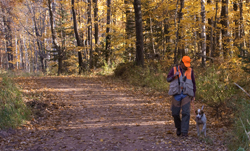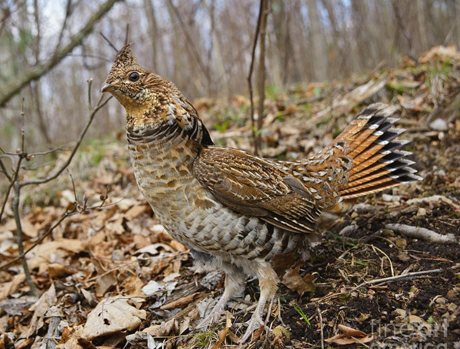Grouse vs. goshawk
“He was watching a ruffed grouse that was poking along the forest floor, as grouse will do, foraging for seeds or fallen berries, perhaps some remaining leaves of clover.”
So Sam Cook wrote in the opening paragraphs of his piece in the November 30 edition of the Duluth News Tribune. Cook related a story about a friend of his who was deer hunting in the north woods.
“Most deer hunters would agree that it’s pleasant to have a grouse come mooching along during a morning on the stand. Grouse are enjoyable to watch—the way they seem to step carefully over the landscape or hop up to cross a deadfall. They cock their heads to the side often, presumably to get a better look above them, where most potential danger is likely to come from.
“Suddenly, he (the deer hunter) said, he caught the movement of a hawk on the wing. A goshawk, he said. A goshawk on a mission. A goshawk whose eyes were trained on the grouse feeding on the forest floor.
“Goshawks are among the primary predators of ruffed grouse. These raptors are designed to dart and weave through dense aspen forests where ruffed grouse live.
“But, in this scenario, the grouse my friend was watching had caught a glimpse of the goshawk at the last second. The grouse burst into flight and made its escape to heavier cover, just evading the predator’s dive.
“The goshawk, foiled this time, winged away to continue its hunt for a less wary grouse.”
On that day, there was a happy outcome for the grouse. But as Jerry and I frequently discuss and acknowledge, the natural world is at once beautiful and ruthless.
Sam Cook had been the outdoor writer for the Duluth News Tribune for 38 years. He retired in 2018 and now freelances for the paper. I first knew of Sam Cook in 1977 when we both lived in Ely, Minn. I worked for the original town newspaper, The Ely Miner, and he worked for the rival paper, The Ely Echo.






